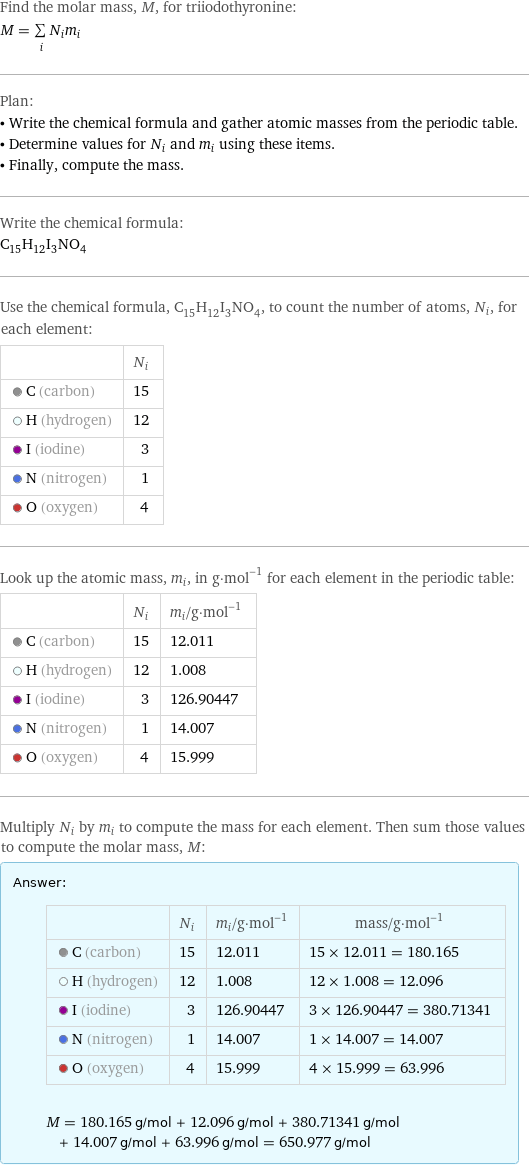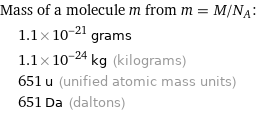Input interpretation

triiodothyronine | molar mass
Result

Find the molar mass, M, for triiodothyronine: M = sum _iN_im_i Plan: • Write the chemical formula and gather atomic masses from the periodic table. • Determine values for N_i and m_i using these items. • Finally, compute the mass. Write the chemical formula: C_15H_12I_3NO_4 Use the chemical formula, C_15H_12I_3NO_4, to count the number of atoms, N_i, for each element: | N_i C (carbon) | 15 H (hydrogen) | 12 I (iodine) | 3 N (nitrogen) | 1 O (oxygen) | 4 Look up the atomic mass, m_i, in g·mol^(-1) for each element in the periodic table: | N_i | m_i/g·mol^(-1) C (carbon) | 15 | 12.011 H (hydrogen) | 12 | 1.008 I (iodine) | 3 | 126.90447 N (nitrogen) | 1 | 14.007 O (oxygen) | 4 | 15.999 Multiply N_i by m_i to compute the mass for each element. Then sum those values to compute the molar mass, M: Answer: | | | N_i | m_i/g·mol^(-1) | mass/g·mol^(-1) C (carbon) | 15 | 12.011 | 15 × 12.011 = 180.165 H (hydrogen) | 12 | 1.008 | 12 × 1.008 = 12.096 I (iodine) | 3 | 126.90447 | 3 × 126.90447 = 380.71341 N (nitrogen) | 1 | 14.007 | 1 × 14.007 = 14.007 O (oxygen) | 4 | 15.999 | 4 × 15.999 = 63.996 M = 180.165 g/mol + 12.096 g/mol + 380.71341 g/mol + 14.007 g/mol + 63.996 g/mol = 650.977 g/mol
Unit conversion

0.65098 kg/mol (kilograms per mole)
Comparisons

≈ 0.9 × molar mass of fullerene ( ≈ 721 g/mol )

≈ 3.4 × molar mass of caffeine ( ≈ 194 g/mol )

≈ 11 × molar mass of sodium chloride ( ≈ 58 g/mol )
Corresponding quantities

Mass of a molecule m from m = M/N_A: | 1.1×10^-21 grams | 1.1×10^-24 kg (kilograms) | 651 u (unified atomic mass units) | 651 Da (daltons)

Relative molecular mass M_r from M_r = M_u/M: | 651